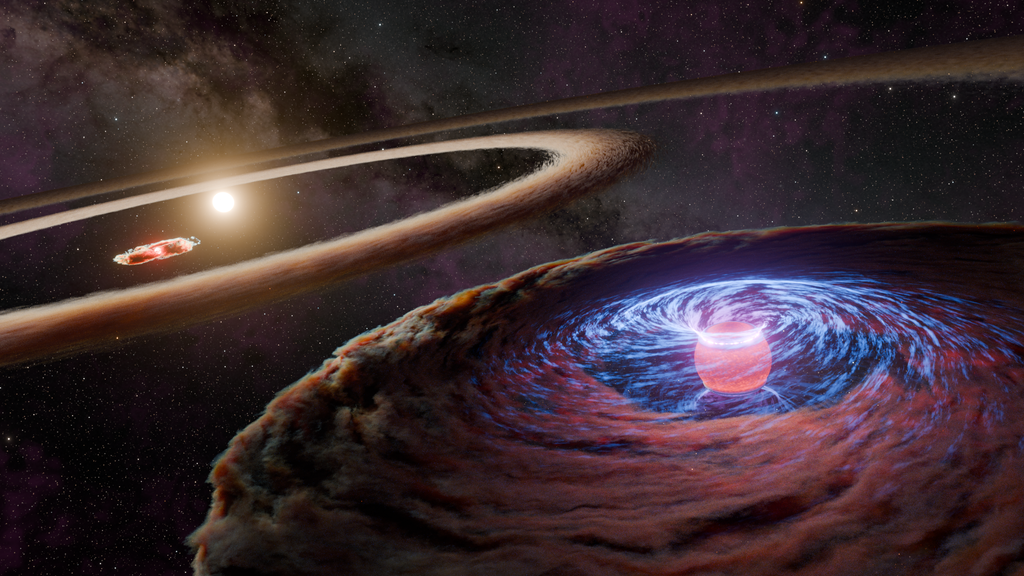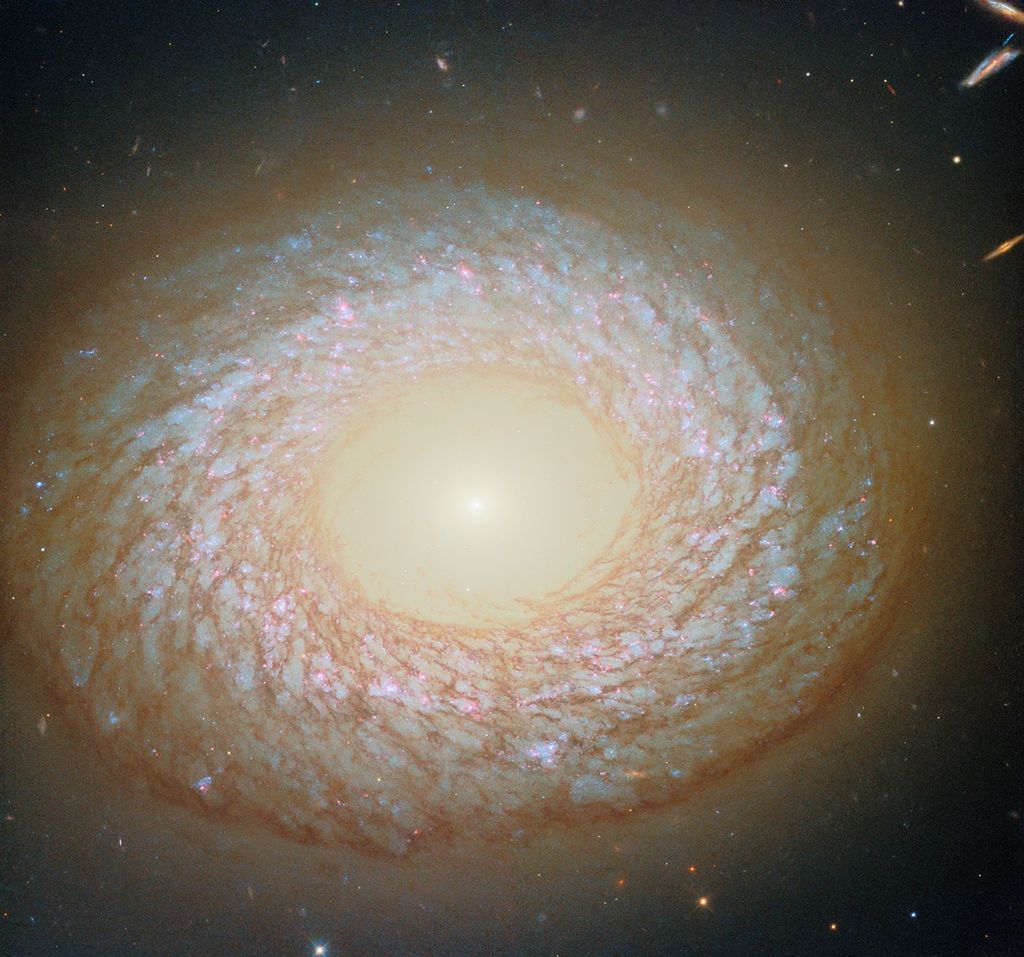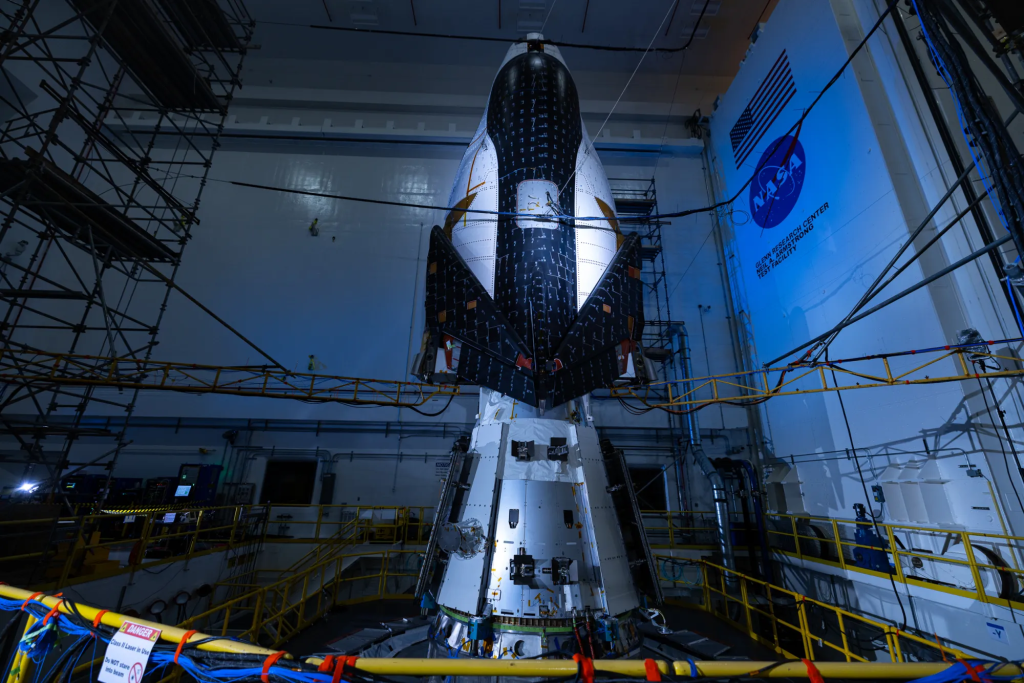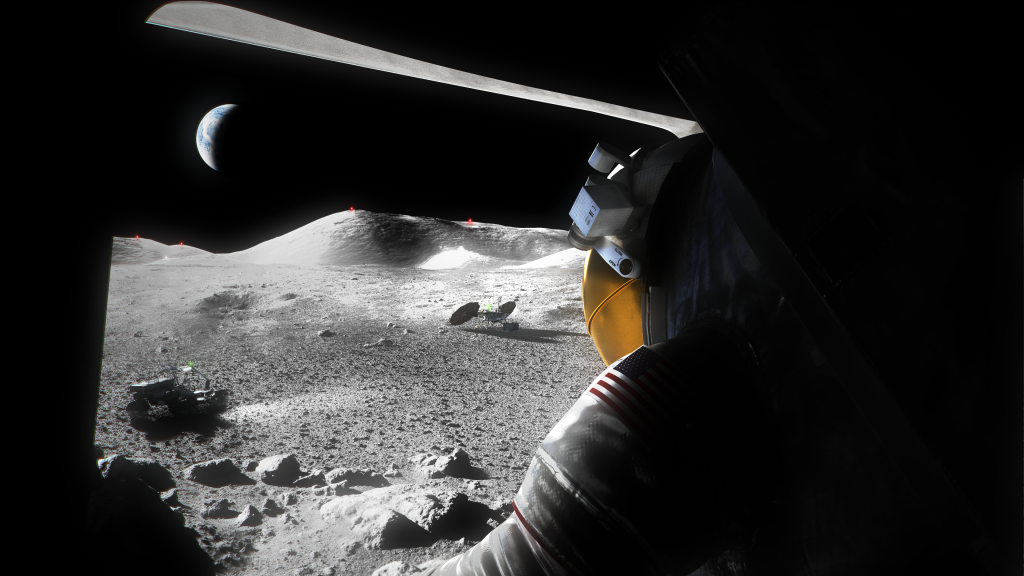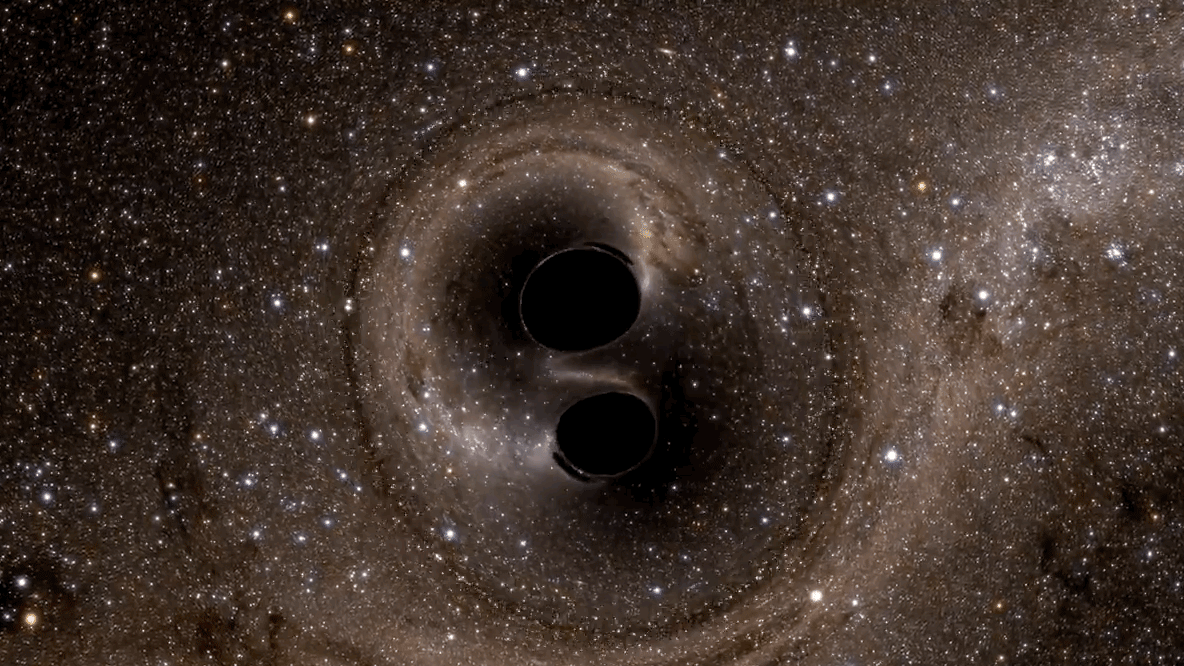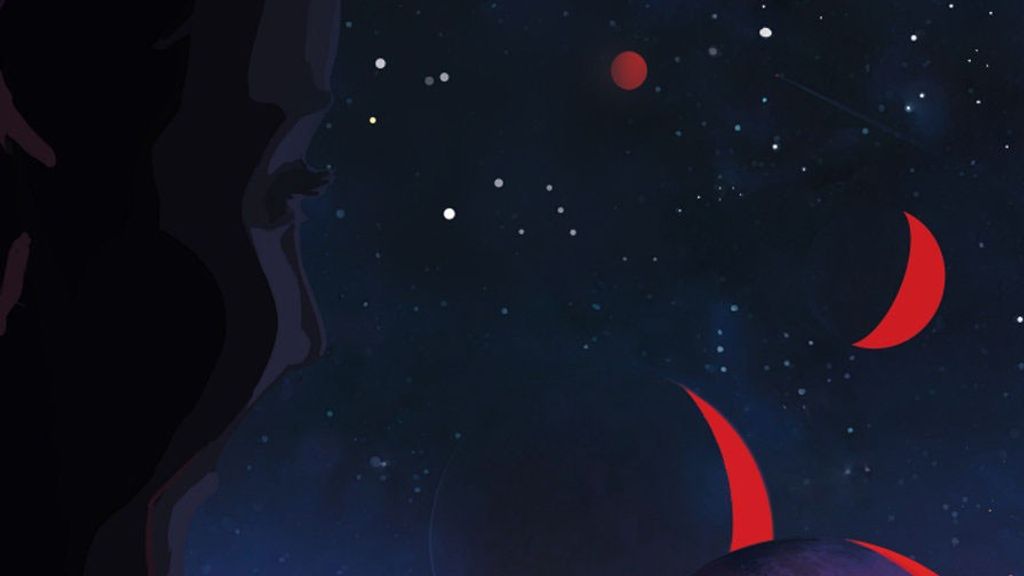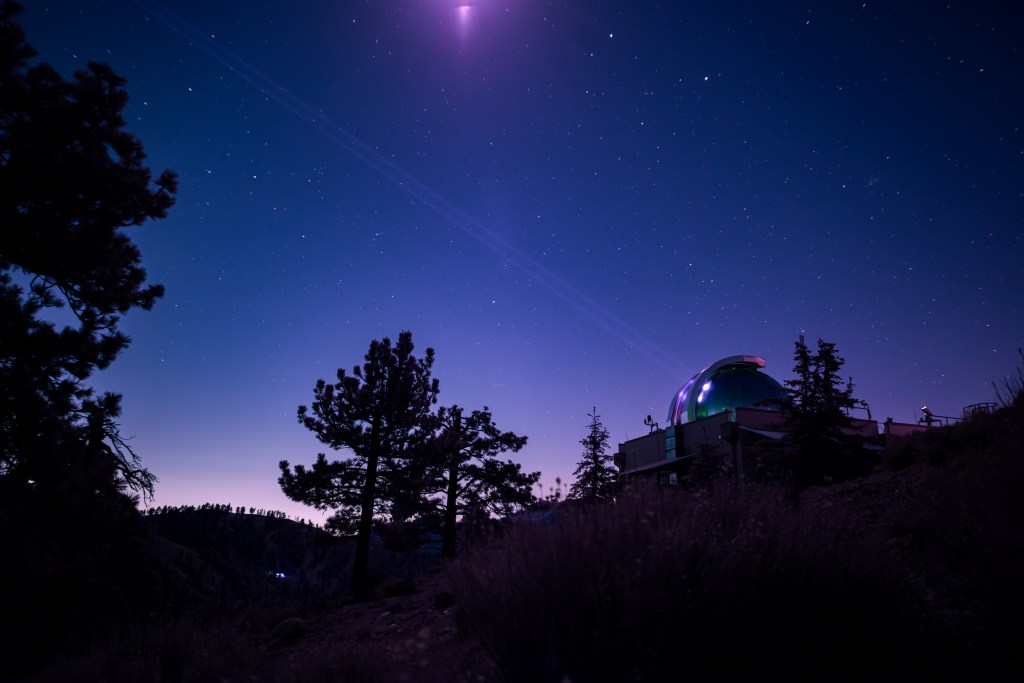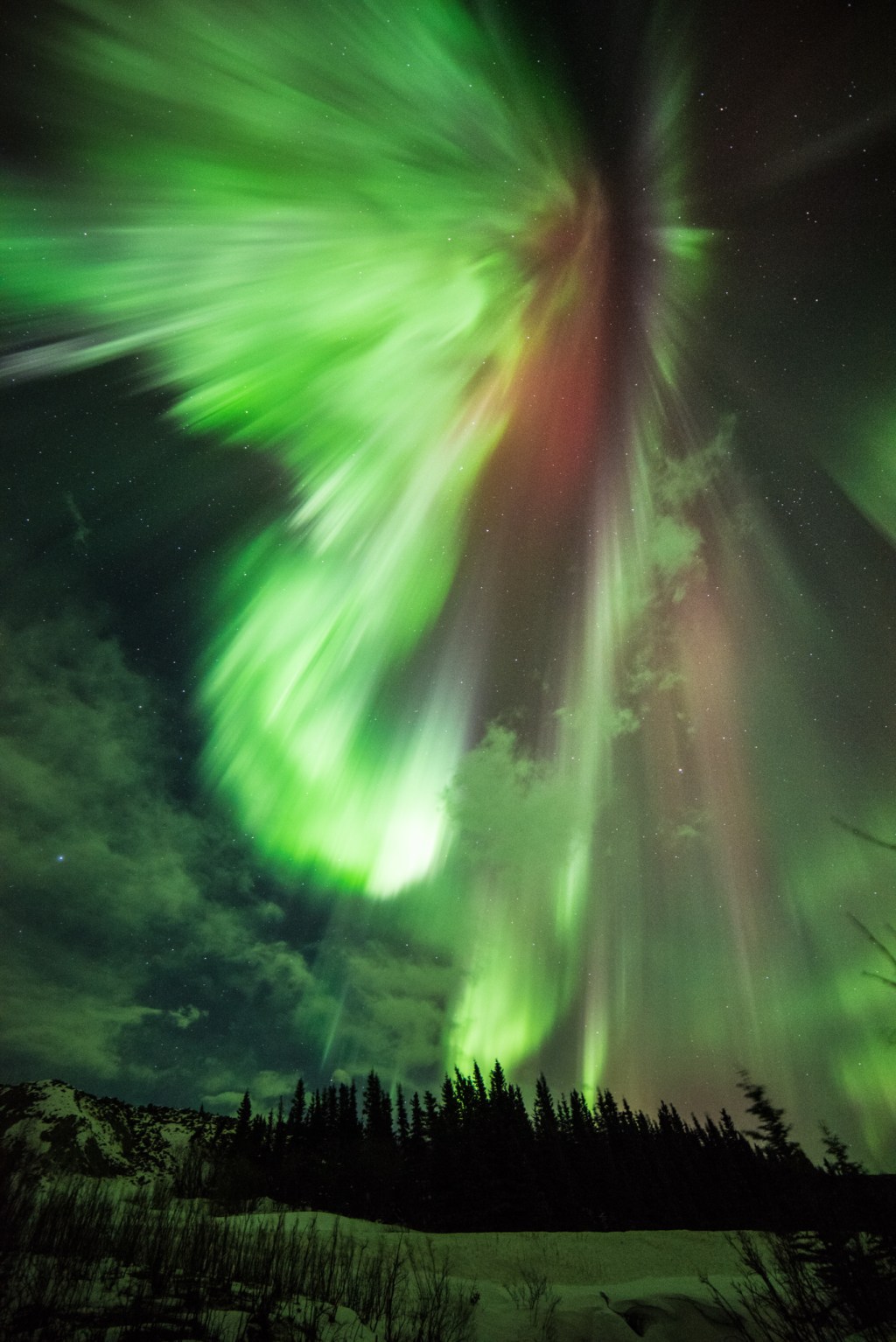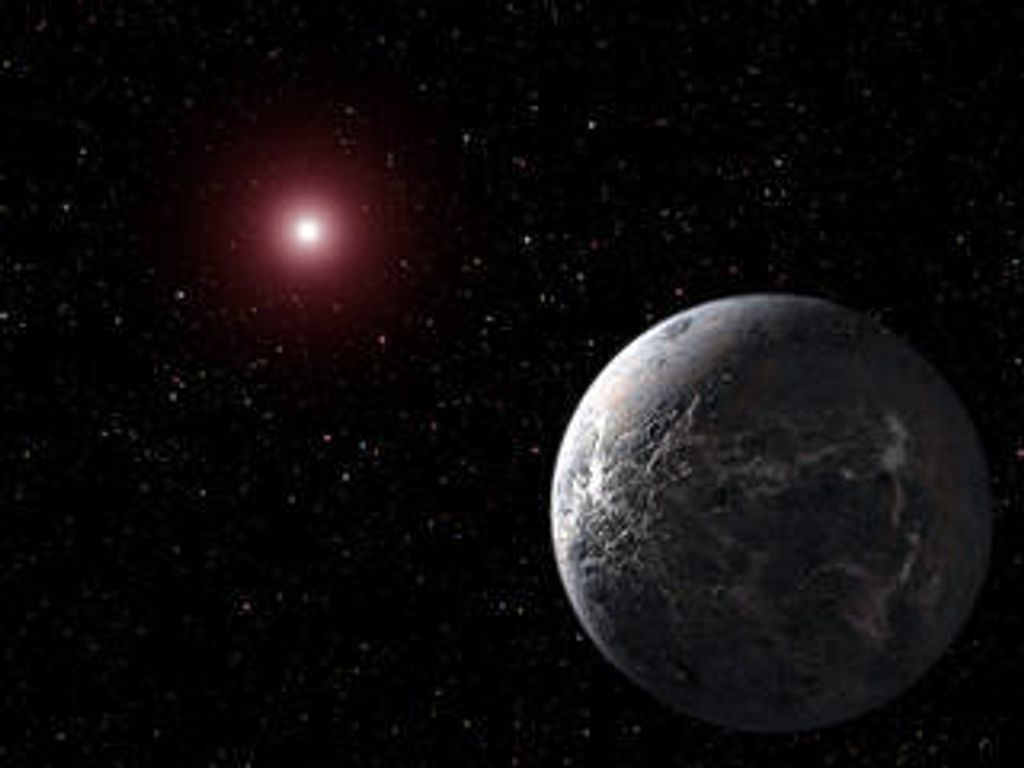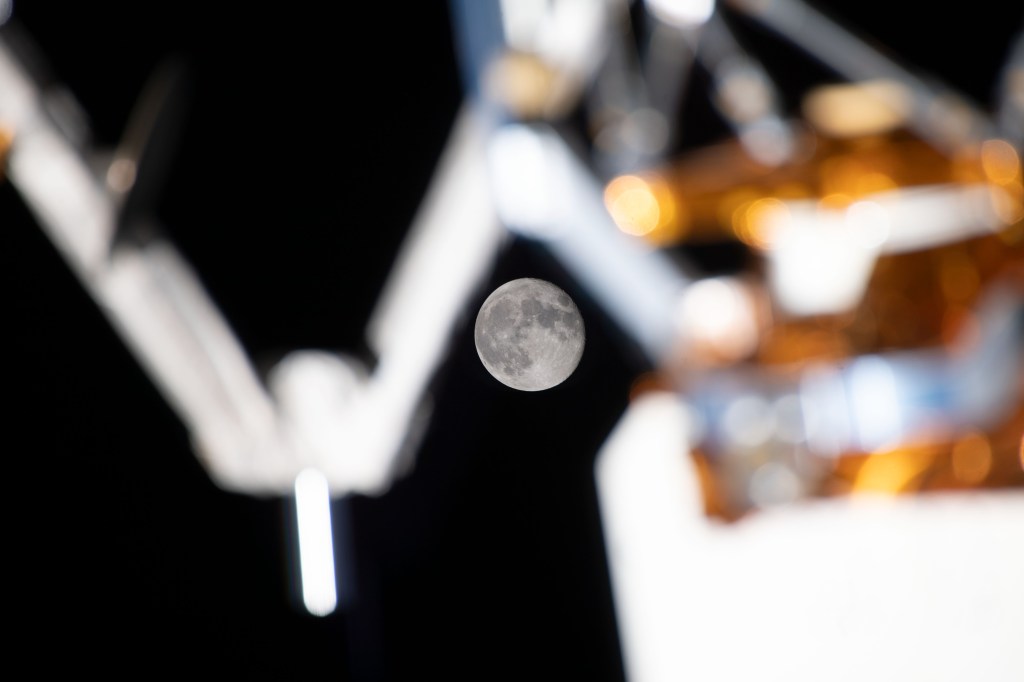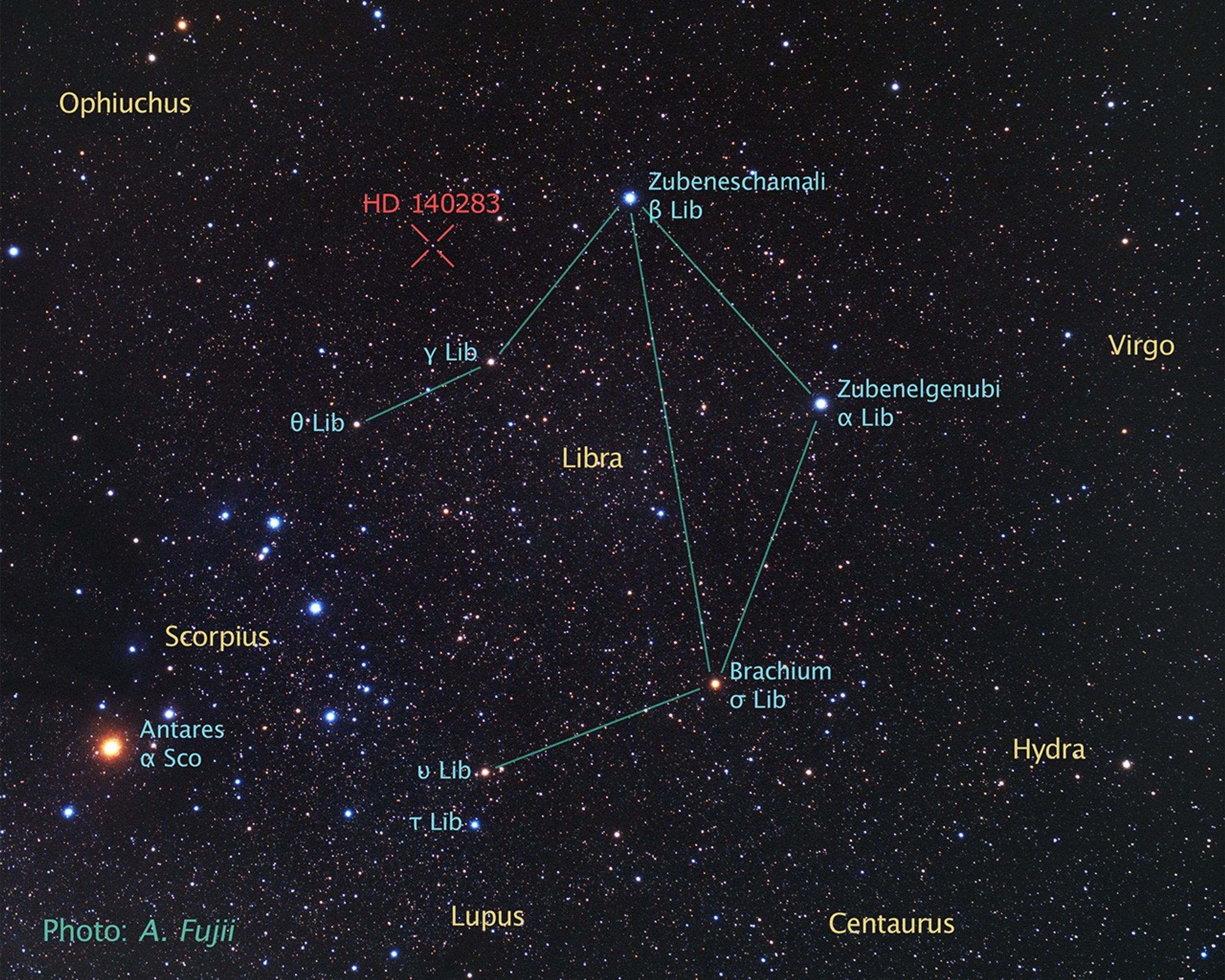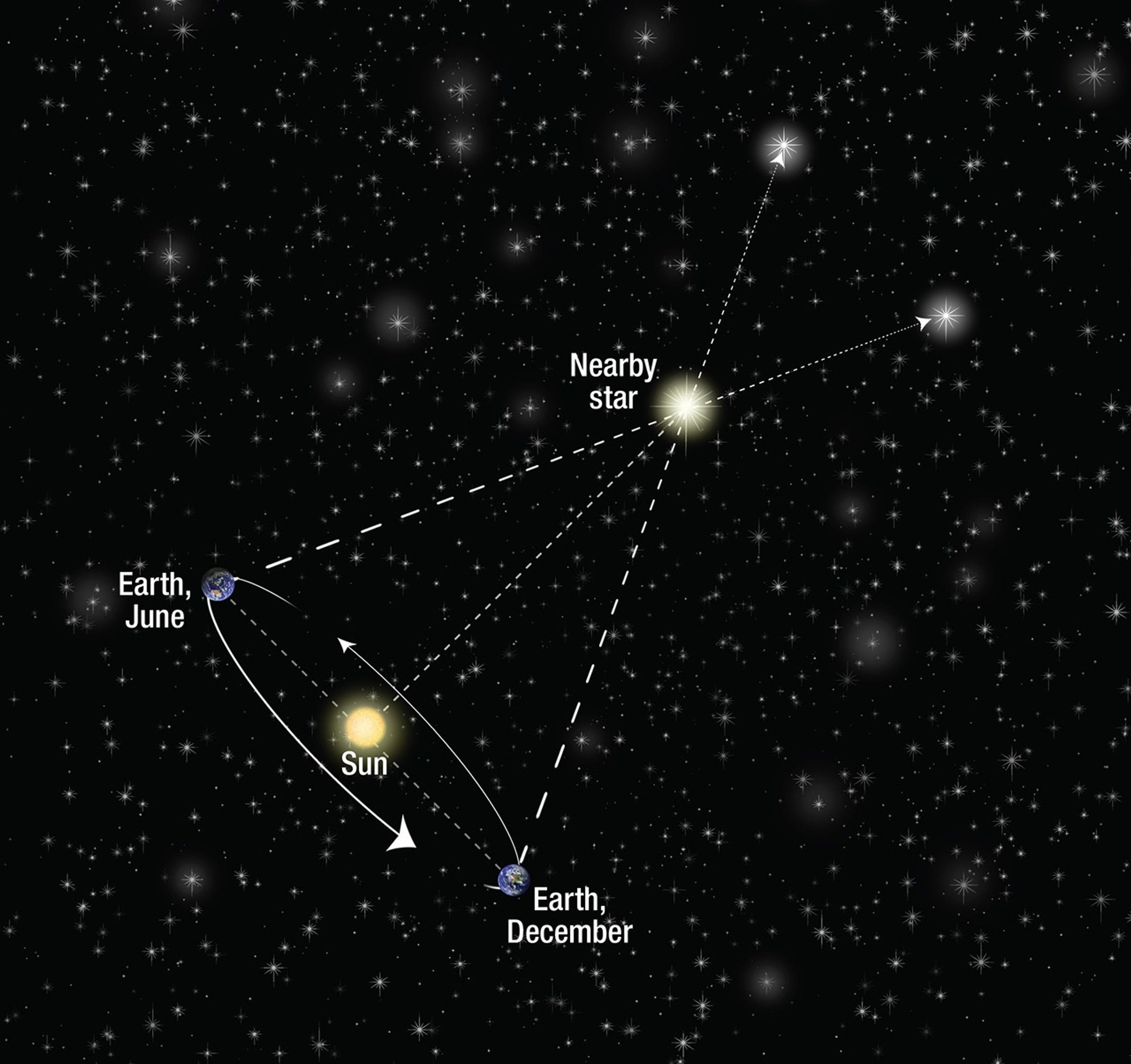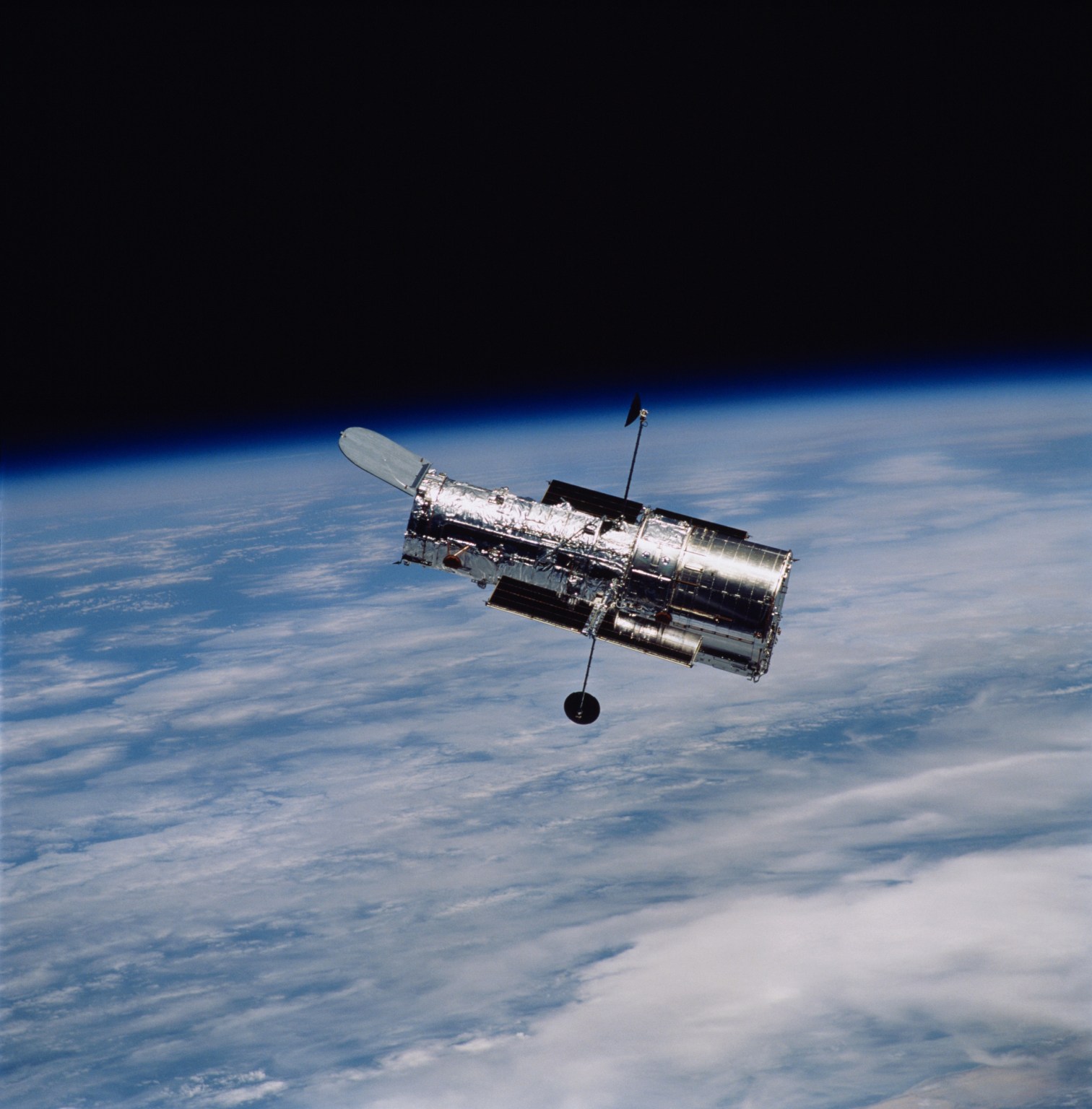1 min read
Artist’s View of Ancient Star (Annotated)
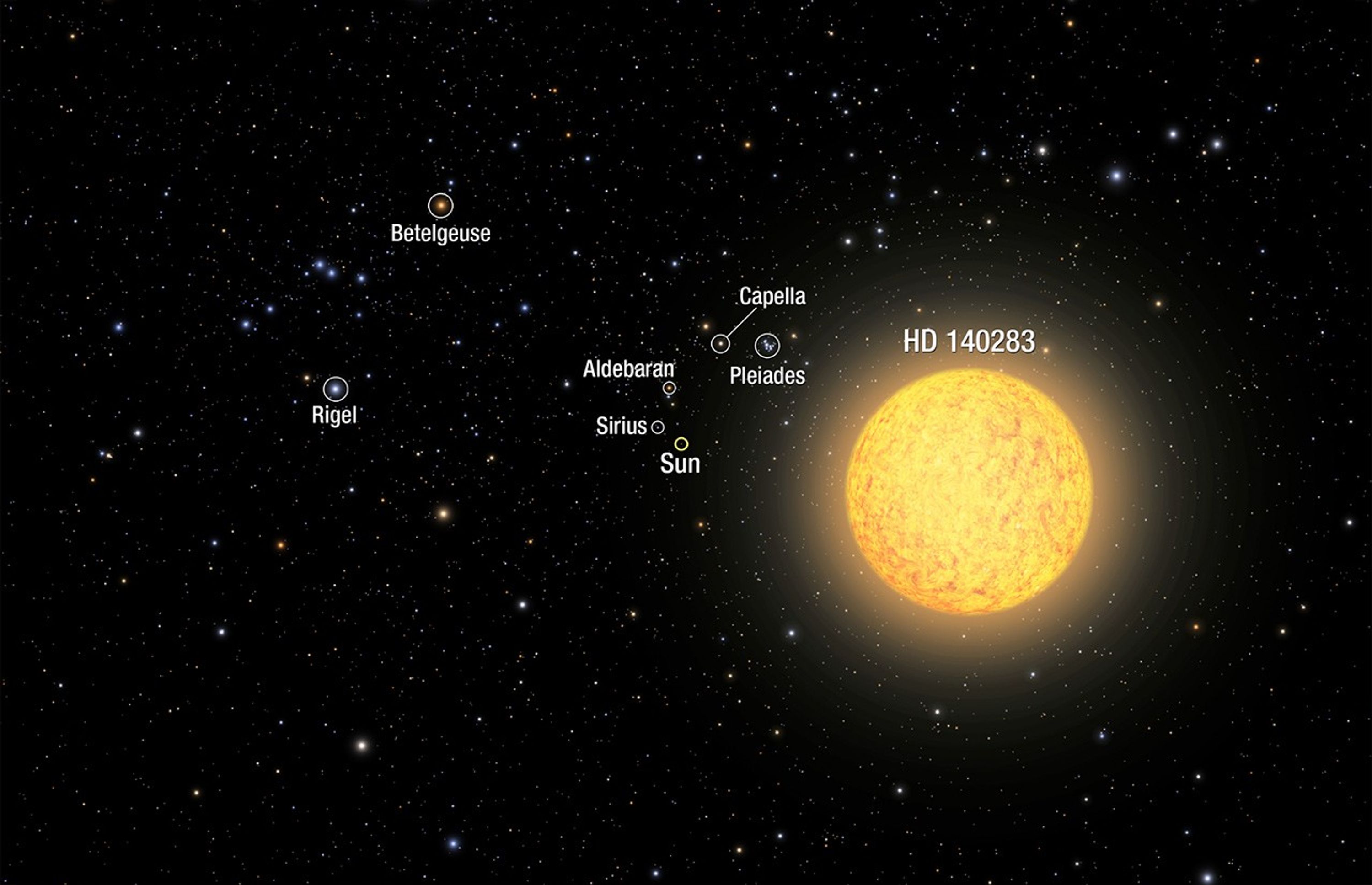
This is an illustration of the oldest star ever found in our solar neighborhood. The aging star, cataloged as HD 140283, lies 190.1 light-years from Earth. Hubble Space Telescope observations narrowed the measurement uncertainty on the star's distance, and this helped refine the calculation of a more precise age of 14.5 billion years (plus or minus 800 million years).
Because the aging star is relatively nearby, familiar stars and constellations as seen from Earth are in the sky, but in different locations. At upper left is the constellation Orion, which looks distorted from our new perspective in space. Just to the upper left of the foreground star is the Pleiades cluster. To the lower left of the cluster, our Sun has dimmed to an apparent magnitude of +7, placing it below naked-eye visibility.
About the Object
- R.A. PositionR.A. PositionRight ascension – analogous to longitude – is one component of an object's position.15h 43m 03s.10
- Dec. PositionDec. PositionDeclination – analogous to latitude – is one component of an object's position.-10° 56' 00".60
- ConstellationConstellationOne of 88 recognized regions of the celestial sphere in which the object appears.Libra
- DistanceDistanceThe physical distance from Earth to the astronomical object. Distances within our solar system are usually measured in Astronomical Units (AU). Distances between stars are usually measured in light-years. Interstellar distances can also be measured in parsecs.190.1 light-years (58.3 parsecs)
About the Data
- Data DescriptionData DescriptionProposal: A description of the observations, their scientific justification, and the links to the data available in the science archive.
Science Team: The astronomers who planned the observations and analyzed the data. "PI" refers to the Principal Investigator.The Hubble data were taken from HST proposals 9883, 10110, and 10480: PI: D. VandenBerg (University of Victoria), H. Bond (STScI and Pennsylvania State University), and E. Nelan (STScI). The science team comprises: H. Bond (STScI and Pennsylvania State University), E. Nelan (STScI), D. VandenBerg (University of Victoria), G. Schaefer (CHARA, Mt. Wilson Observatory), and D. Harmer (NOAO). Note: The image of HD 140283 used in this release was taken for the Digitized Sky Survey (DSS; STScI/AURA, Palomar/Caltech, and UKSTU/AAO). The Anglo-Australian Observatory (AAO) UK Schmidt telescope photographed the star in blue light. - InstrumentInstrumentThe science instrument used to produce the data.HST>FGS
- Exposure DatesExposure DatesThe date(s) that the telescope made its observations and the total exposure time.August 2003 - March 2011
- FiltersFiltersThe camera filters that were used in the science observations.F583W (583nm)
- Object NameObject NameA name or catalog number that astronomers use to identify an astronomical object.HD 140283
- Object DescriptionObject DescriptionThe type of astronomical object.Oldest Star in Solar Neighborhood
- Release DateMarch 7, 2013
- Science ReleaseHubble Finds Birth Certificate of Oldest Known Star
- Credit
Related Images & Videos

Oldest Star in Solar Neighborhood
This is a Digitized Sky Survey image of the oldest star with a well-determined age in our galaxy. The aging star, cataloged as HD 140283, lies 190.1 light-years away. Hubble Space Telescope was used to narrow the measurement uncertainty on the star's distance, and this helped...

Artist's View of Ancient Star
This is an illustration of the oldest star ever found in our solar neighborhood. The aging star, cataloged as HD 140283, lies 190.1 light-years from Earth. Hubble Space Telescope observations narrowed the measurement uncertainty on the star's distance, and this helped refine the...
Share
Details
Claire Andreoli
NASA’s Goddard Space Flight Center
Greenbelt, Maryland
claire.andreoli@nasa.gov

